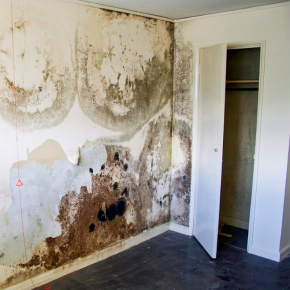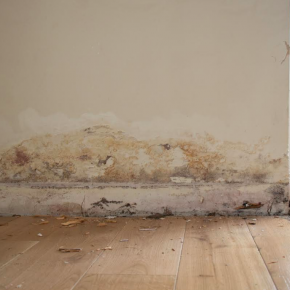
Public sector beats private when it comes to tackling housing damp: Safeguard Europe
This piece from Safeguard Europe explores how renters with private landlords are more likely to suffer due to damp and mould than those with public sector landlords, according to a YouGov poll.
The survey of 1,154 tenants, conducted earlier this year on behalf of leading damp-proofing and waterproofing technology specialist Safeguard Europe, revealed 55% of those with private landlords had experienced damp and mould compared to 46% of those in local authority or housing association properties.
The good news is that a new law, the Homes (Fitness for Human Habitation) Act 2018, which came into force at the end of March this year, offers a way for tenants to take action against negligent landlords.
The Act gives tenants the ability to take their landlords to court if they don’t do so – something virtually impossible under previous existing legislation.

Currently, the best legal recourse for tenants is to pursue a statutory nuisance notice with local authority environmental health offers, but often the landlord’s response is to begin eviction proceedings, which leads to people being deterred from complaining.
However, as the poll highlighted, awareness among renters of their powers under the new legislation is relatively low with only 35% aware of the Act.
Having been told by the researchers about the new law, 42% of those surveyed said they would be more likely to complain about problems such as damp in the light of the act.
Damp in properties is commonly caused by rising damp, rain penetration, leaking pipes or gutters and condensation.
Damp and mould are not just unsightly, but they can lead to health problems. According to the NHS, elderly people and children are particularly at risk, as are those with existing respiratory problems such as asthma, allergies or skin problems such as eczema.
Commenting on the fact privately-rented properties seemed to have more issues than publicly-owner ones, Hudson Lambert, Safeguard’s MD, commented: “The reason for the discrepancy could be down to the fact that previous efforts to improve the condition of rented properties, such as Decent Homes, have been focussed on public sector housing.”
The Decent Homes Standard was introduced in 2000 with the aim of getting all social housing up to a certain standard by 2010.
The latest English Housing Survey1, published in July 2019, says 13% of public sector homes still do not meet the standard, compared to 25% in the private sector (both owner-occupied and privately rented).
The English Housing Survey also records 30% of households surveyed had reported problems with condensation, damp or moulds in their homes.
This refers to all types of housing: owner occupied, privately rented and local authority and housing association.
For more advice and information on the types of damp and how to treat them, visit Safeguard Europe’s website. For full details of the survey, click here
Contact:
Safeguard Europe,
Redkiln Close,
Horsham,
West Sussex,
United Kingdom,
RH13 5QL
Phone: 01403 210204
Fax: 01403 217529
Visit Safeguard Europe's website
Visit Supplier's page
Latest news

17th April 2025
Nuaire shares expertise at Specifi Mechanical Services events in 2025
Indoor air quality and ventilation manufacturing specialist Nuaire is pleased to be exhibiting at the Specifi Mechanical Services events once again in 2025.
Posted in Air Conditioning, Articles, Building Industry Events, Building Industry News, Building Products & Structures, Building Services, Exhibitions and Conferences, Facility Management & Building Services, Heating, Ventilation and Air Conditioning - HVAC, Restoration & Refurbishment, Retrofit & Renovation
15th April 2025
West Fraser: CaberDek earns top marks from Home Counties carpentry specialist
A specialist carpentry sub-contractor covering housing sites across a large swathe of the Home Counties has come to value CaberDek from the West Fraser range for a variety of reasons: not least because the high quality panel product doesn’t destroy his operatives’ electric saws!
Posted in Articles, Building Industry News, Building Products & Structures, Building Systems, Case Studies, Restoration & Refurbishment, Retrofit & Renovation, Roofs, Timber Buildings and Timber Products, Wooden products
15th April 2025
GEZE: The Role of Access Control Systems in Enhancing Building Safety
Jane Elvins, Specification and Business Development Manager at GEZE UK, delves into the role of access control systems in enhancing building safety…
Posted in Access Control & Door Entry Systems, Architectural Ironmongery, Articles, Building Industry News, Building Products & Structures, Building Services, Doors, Facility Management & Building Services, Health & Safety, Restoration & Refurbishment, Retrofit & Renovation, Security and Fire Protection
11th April 2025
Don’t Do a Dave! It’s Time to Lock FIT Show 2025 in Your Calendar!
It’s that time again – FIT Show is back! You could be forgiven for thinking there won’t be much new to see when FIT Show returns to the NEC from 29 April – 1 May. Wrong!
Posted in Articles, Building Industry Events, Building Industry News, Building Products & Structures, Building Services, Continuing Professional Development (CPD's), Exhibitions and Conferences, Information Technology, Innovations & New Products, Restoration & Refurbishment, Retrofit & Renovation, Seminars, Training
 Sign up:
Sign up: